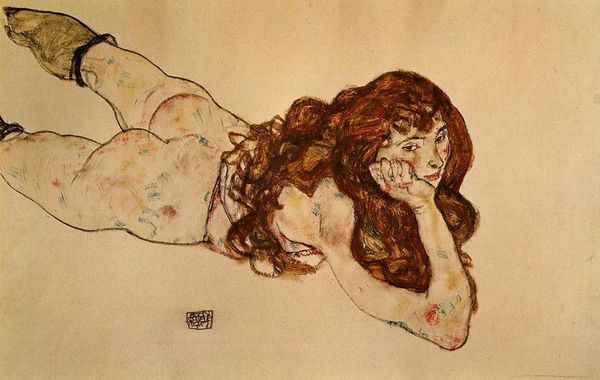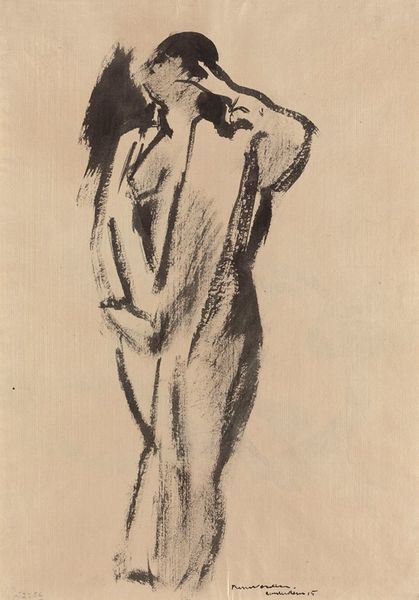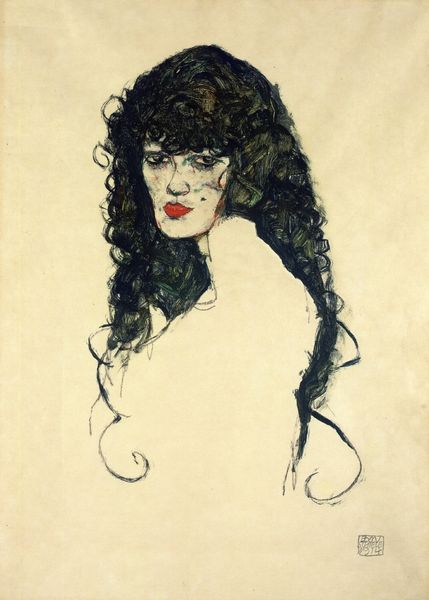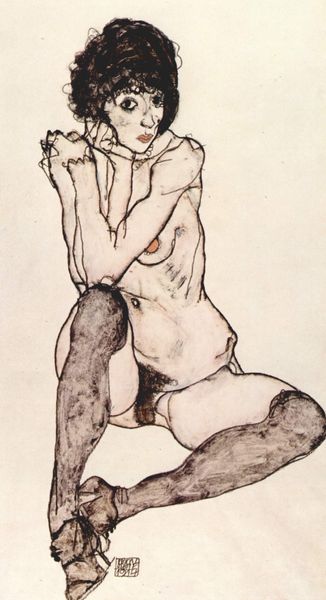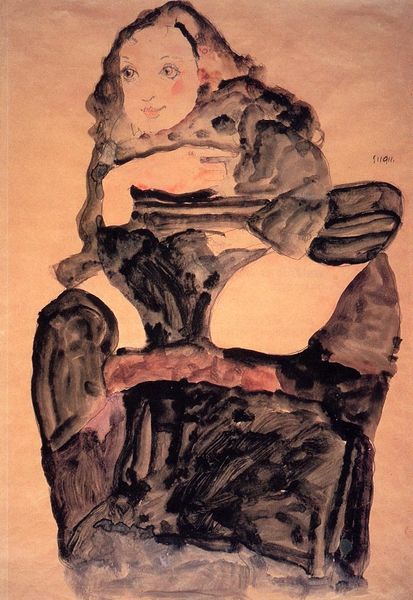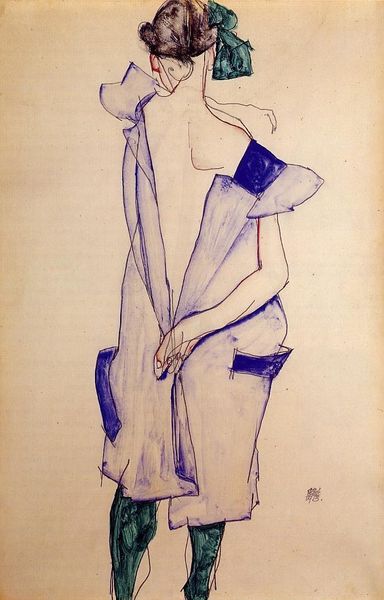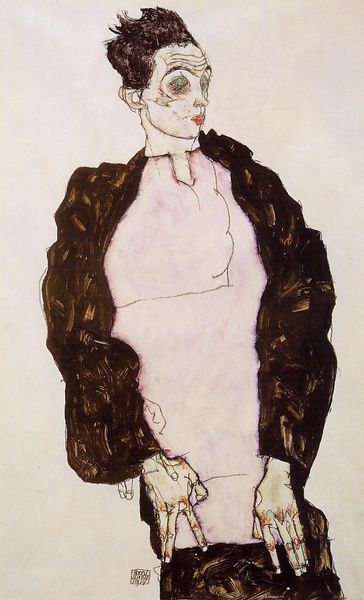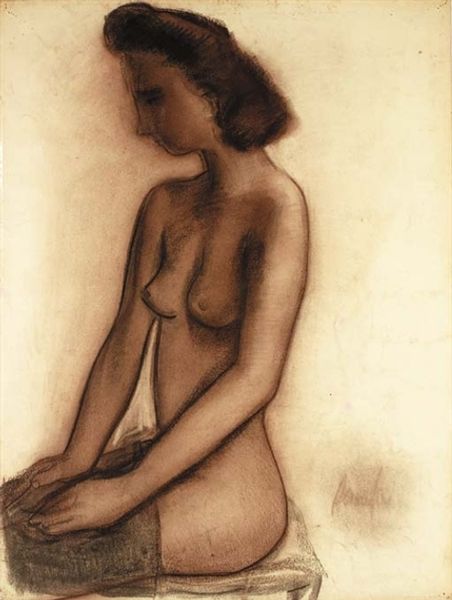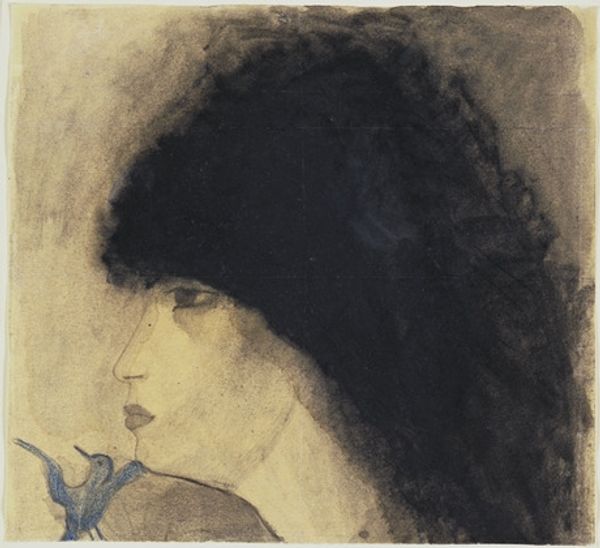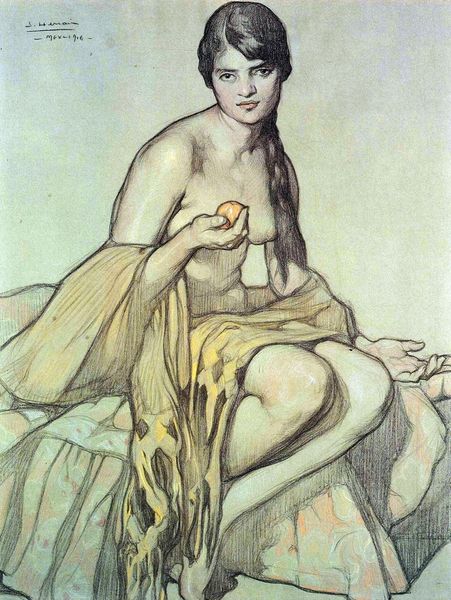
drawing
#
portrait
#
drawing
#
pencil sketch
#
charcoal drawing
#
figuration
#
charcoal art
#
female-nude
#
pencil drawing
#
expressionism
#
portrait drawing
#
nude
Copyright: Public domain
Editor: Here we have Egon Schiele’s "Girl in Black," created in 1911, and currently residing here at the Allen Memorial Art Museum. It's a drawing done in charcoal and pencil. There's something very haunting about her expression, but what really strikes me is how rough the marks are - almost unfinished. What do you see in this piece? Curator: The roughness you mention is key. Schiele’s intense, almost violent application of charcoal and pencil, speaks to the societal anxieties of pre-war Vienna. He was deliberately disrupting traditional notions of academic drawing, its techniques, materials and functions. Consider the cheap paper and the hurried lines – they reflect a break from bourgeois standards of artistic production. Editor: So, the materials themselves are a statement? Curator: Exactly! He's choosing to depict the body not as idealized beauty, but as a raw, exposed subject, crafted through readily available and deliberately unrefined means. The “Girl in Black” could symbolize not just an individual, but the broader social landscape of the time and class. Can you think of who the “Girl” might have been? Editor: Perhaps someone from outside the upper class, if the materials imply the piece critiques elitist standards? Maybe someone without the leisure for formal portraiture? Curator: Precisely. Think about Schiele's social circle - the models he used, the working-class women of Vienna, their role as producers of labor rather than objects of leisure. The making and production here tells us that, too. Editor: That really shifts my perspective. I was so focused on the figure’s pose. It is interesting to look beyond what is represented, towards the way it was made and the possible message embedded there! Curator: Indeed. By examining the materiality and means of production, we unlock a richer understanding of the artwork and the cultural forces at play during its creation.
Comments
No comments
Be the first to comment and join the conversation on the ultimate creative platform.

